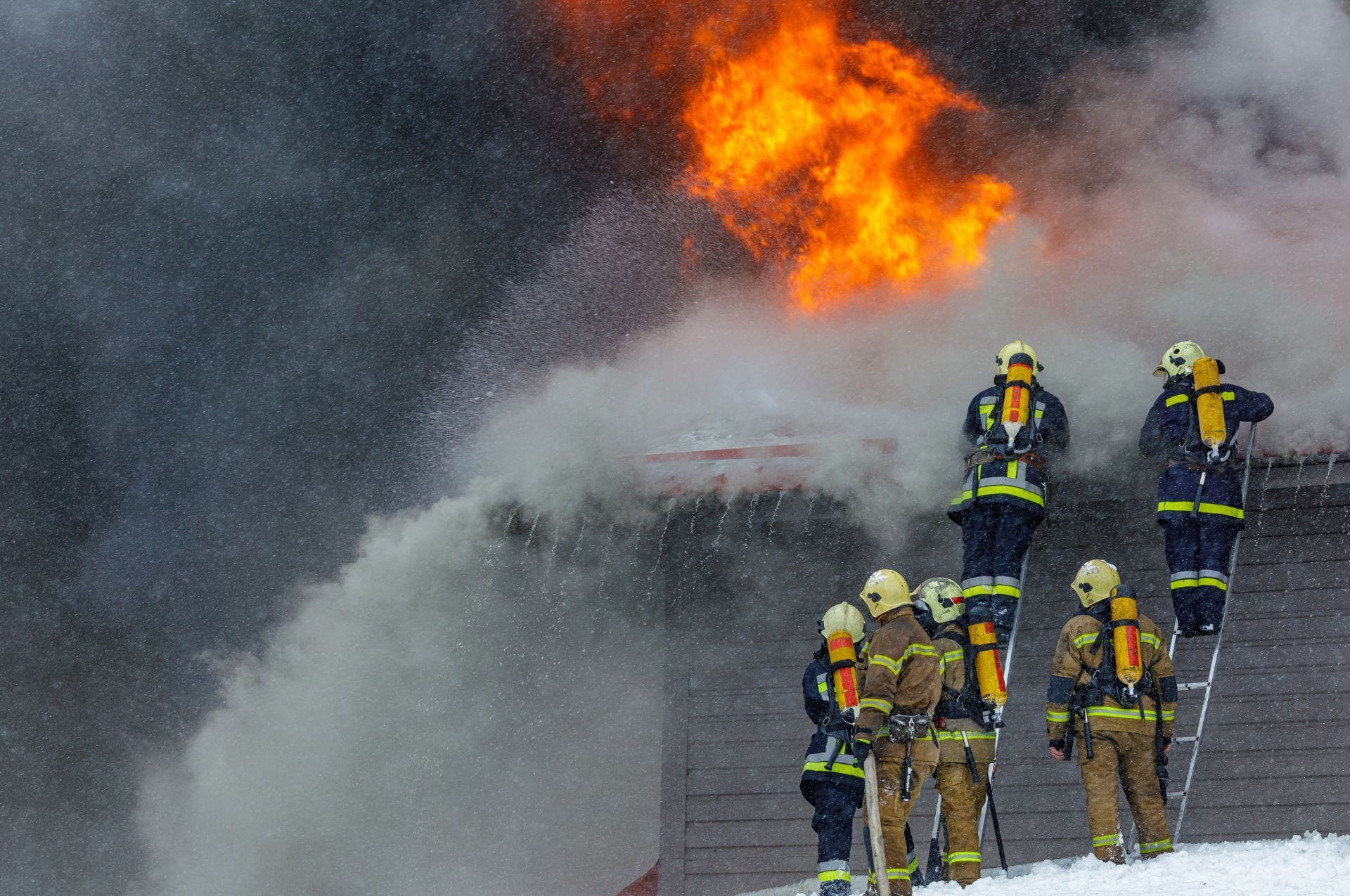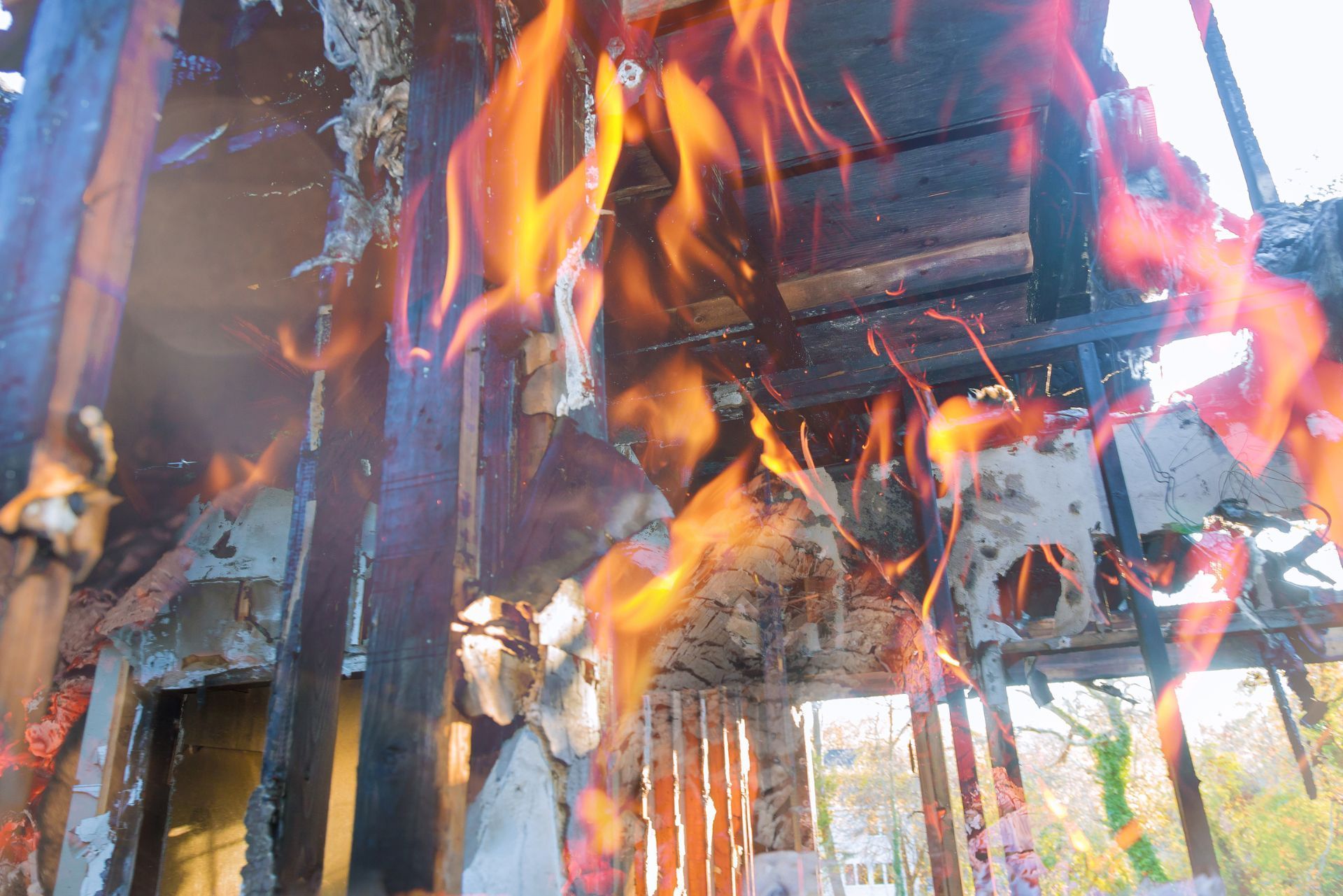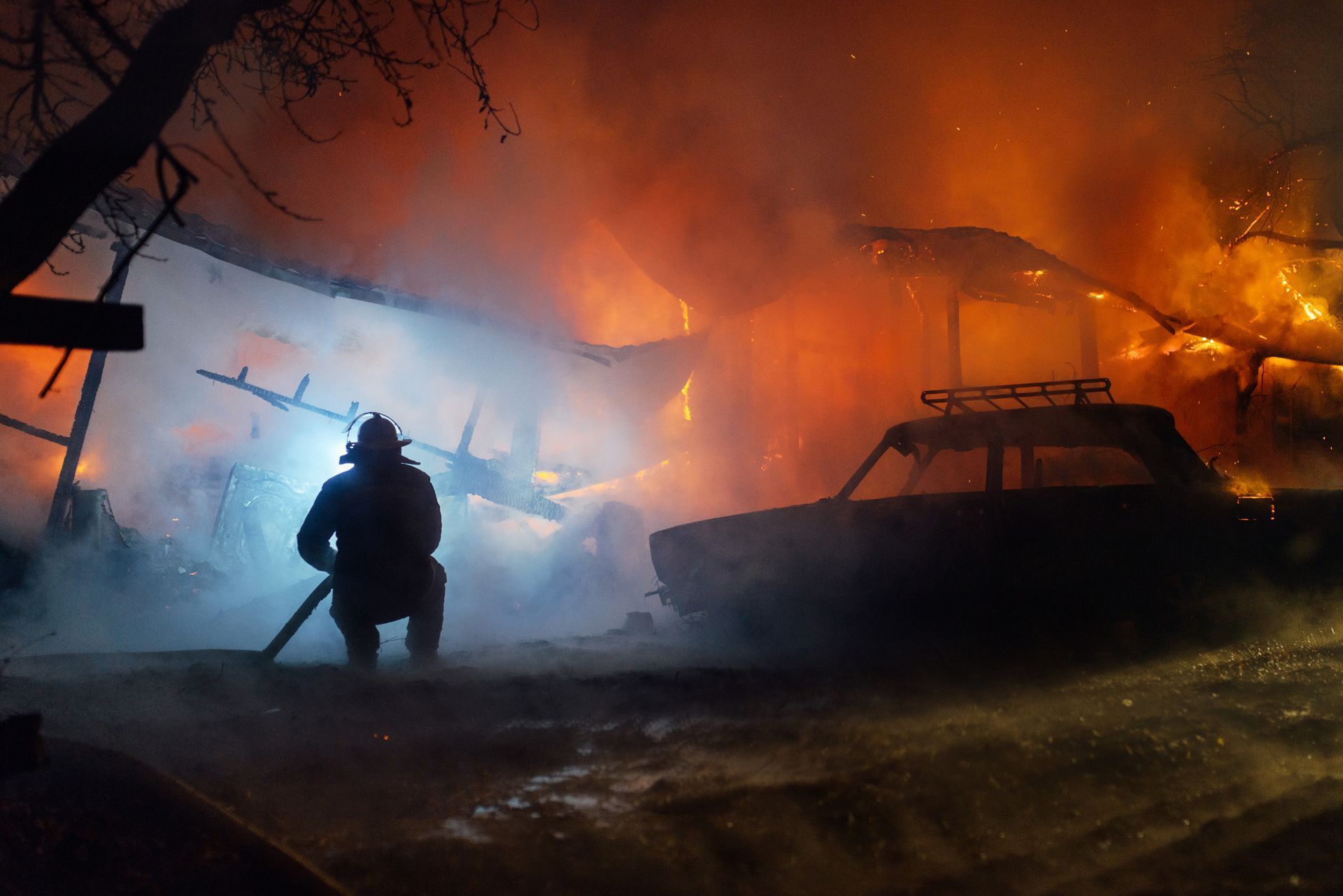
Top 3 Recommended Policies
Living in Connecticut offers many benefits—from charming historic towns to beautiful coastal views—but it also comes with risks, especially when it comes to protecting your home. Fire damage is one of the most devastating threats a homeowner can face, and having the right insurance coverage is essential. This comprehensive guide covers everything you need to know about dwelling fire insurance in Connecticut, helping you safeguard your property, finances, and peace of mind.
What Is Dwelling Fire Insurance?
Dwelling fire insurance is a specialized type of property insurance designed to protect residential buildings against damages caused by fire and related perils. Unlike standard homeowners insurance, which covers a broad range of risks, dwelling fire insurance focuses primarily on fire-related incidents, often including coverage for smoke damage, lightning, and explosions.
In Connecticut, dwelling fire insurance is particularly relevant for homeowners who want targeted protection or those who own older homes that may not qualify for traditional homeowners policies. It can also be a cost-effective alternative for landlords and property investors who rent out homes or multifamily units. Given the unique risks associated with older properties, such as outdated wiring or plumbing, this type of insurance can provide peace of mind, ensuring that the structure itself is safeguarded against the devastating effects of fire.
Moreover, dwelling fire insurance can also be tailored to meet the specific needs of the property owner. For instance, some policies may offer additional coverage options for detached structures like garages or sheds, which can be especially valuable for homeowners with extensive outdoor amenities. Understanding the nuances of these policies can help property owners make informed decisions about their coverage, ensuring they have adequate protection for their investments.
How Dwelling Fire Insurance Differs from Homeowners Insurance
While homeowners insurance covers fire damage, it also includes liability protection, personal property coverage, and additional living expenses if you need to temporarily relocate. Dwelling fire insurance, on the other hand, typically focuses on the structure itself and may not include personal belongings or liability coverage unless added as endorsements.
This narrower focus often results in lower premiums, but it means policyholders should carefully review what is and isn’t covered. For example, many dwelling fire policies exclude coverage for theft or water damage unrelated to firefighting efforts. Additionally, it's crucial for policyholders to be aware of the specific terms and conditions of their policy, as some may have limitations on the types of fires covered, such as those caused by negligence or illegal activities. This level of detail can significantly affect the claims process in the unfortunate event of a fire, making it essential for homeowners to fully understand their policy’s stipulations and exclusions.

Why Fire Insurance Is Crucial in Connecticut
Connecticut’s climate and building characteristics make fire insurance a critical consideration. According to the National Fire Protection Association (NFPA), there are roughly 7,000 home fires reported annually in Connecticut, resulting in millions of dollars in property damage. While fire safety standards and building codes have improved, the risk remains significant, especially in older homes with outdated electrical systems or heating equipment. The dense population and close proximity of homes in many Connecticut neighborhoods can exacerbate the spread of fire, making it even more essential for homeowners to protect their properties with adequate insurance coverage.
Moreover, the emotional toll of losing a home to fire cannot be understated. Families often face not only the loss of their physical possessions but also the disruption of their lives, including temporary relocations and the stress of navigating the recovery process. Fire insurance can provide peace of mind, knowing that financial support is available to help rebuild and restore what was lost. This safety net extends beyond mere property replacement; it can also cover additional living expenses incurred while a home is being repaired or rebuilt, ensuring that families can maintain some semblance of normalcy during a challenging time.
Common Causes of Home Fires in Connecticut
Understanding the leading causes of home fires can help homeowners take preventive measures and appreciate the importance of insurance coverage. The most common causes include:
- Cooking-related fires: Unattended cooking is the top cause of home fires nationwide, including Connecticut.
- Heating equipment: Space heaters and fireplaces can ignite nearby combustibles if not properly maintained.
- Electrical malfunctions: Faulty wiring or overloaded circuits are frequent culprits in older homes.
- Smoking materials: Cigarettes and other smoking products can cause fires if not fully extinguished.
Additionally, with the rise of home improvement projects and DIY renovations, homeowners must be increasingly vigilant about fire safety. Improperly installed fixtures or the use of flammable materials can heighten the risk of fire, particularly in homes that are undergoing significant changes. Awareness of these risks can empower homeowners to take proactive steps, such as scheduling regular inspections of heating systems and electrical wiring, and ensuring that smoke detectors are functional and up to date. Given these risks, dwelling fire insurance provides a vital safety net that can help homeowners recover financially after a fire incident.
What Does Connecticut Dwelling Fire Insurance Cover?
Dwelling fire insurance policies in Connecticut generally cover the physical structure of your home against fire and related perils. However, coverage specifics can vary widely depending on the insurer and the policy you select.
Typical Coverage Components
- Dwelling coverage: Protects the main structure of your home, including walls, roof, and built-in appliances.
- Other structures: Coverage may extend to detached garages, sheds, fences, and other structures on your property.
- Fire damage: Includes damage caused directly by flames, smoke, and heat.
- Lightning and explosions: Most policies cover damage from lightning strikes and explosions linked to fire.
- Fire department service charges: Some policies reimburse you for fees charged by fire departments responding to your property.
What’s Typically Not Covered?
It’s important to understand the limitations of dwelling fire insurance. Common exclusions include:
- Personal property: Most dwelling fire policies do not cover your belongings inside the home unless you add specific endorsements.
- Liability protection: Unlike homeowners insurance, liability coverage for injuries or property damage to others is usually not included.
- Water damage: Damage from flooding or sewer backups is generally excluded unless you purchase separate flood insurance.
- Earthquake and wind damage: These perils are typically excluded and require additional policies or riders.
In addition to the standard coverage components, some policies may offer optional endorsements that can enhance your protection. For instance, you might consider adding coverage for personal property if you want to ensure that your belongings are safeguarded against fire or theft. This can be particularly beneficial for homeowners with valuable items, such as electronics, jewelry, or artwork, which may be at risk during a fire incident. Furthermore, some insurers provide the option to include loss of use coverage, which can help cover additional living expenses if your home becomes uninhabitable due to a covered fire loss.
Understanding the nuances of your dwelling fire insurance is crucial for effective risk management. As you evaluate different policies, take the time to review the specific terms and conditions, as well as any potential discounts for bundling with other types of insurance, such as auto or umbrella policies. Additionally, engaging with an insurance agent who specializes in fire insurance can provide insights into the most suitable coverage options tailored to your unique circumstances and the specific risks associated with your geographic area, especially considering Connecticut's varying climate and potential natural hazards.
How Much Does Dwelling Fire Insurance Cost in Connecticut?
The cost of dwelling fire insurance varies based on several factors, including the location, age, and construction of your home, as well as the amount of coverage you select. On average, homeowners in Connecticut might expect to pay between $400 and $1,200 annually for dwelling fire insurance, but this can fluctuate significantly. It's important to note that these costs can also be influenced by the specific risks associated with your area, such as susceptibility to wildfires or severe winter storms, which are more common in certain regions of the state.
Factors Influencing Premiums
Some of the key factors that impact your dwelling fire insurance premium include:
Home construction materials: Homes built with fire-resistant materials like brick or stone often have lower premiums than wood-frame houses.
- Proximity to fire services: Living closer to a fire station or hydrant can reduce your rates.
- Home age and condition: Older homes with outdated wiring or heating systems may be more expensive to insure.
- Coverage limits and deductibles: Higher coverage limits and lower deductibles typically increase premiums.
- Claims history: A history of previous claims can raise your insurance costs.
Ways to Lower Your Insurance Costs
Homeowners can take several steps to reduce their dwelling fire insurance premiums in Connecticut:
- Install smoke detectors and fire alarms throughout the home.
- Maintain heating and electrical systems with regular inspections.
- Use fire-resistant building materials during renovations.
- Increase your deductible to lower your premium, but ensure it remains affordable in case of a claim.
- Shop around and compare quotes from multiple insurance providers.
Additionally, participating in local fire safety programs or community initiatives can sometimes lead to discounts. Many insurance companies appreciate proactive homeowners who take steps to mitigate risks, and they may reward these efforts with lower premiums. Furthermore, bundling your dwelling fire insurance with other policies, such as auto or life insurance, can provide significant savings. Always inquire about any available discounts when speaking with your insurance agent, as these can vary widely between providers.
It's also wise to review your policy annually to ensure that it reflects any changes in your home or lifestyle. For instance, if you've made improvements that enhance the safety of your home, such as installing a new roof or upgrading electrical systems, these changes may qualify you for reduced rates. Staying informed about the insurance market and understanding the nuances of your coverage can empower you to make better decisions and potentially save money in the long run.

How to Choose the Right Dwelling Fire Insurance Policy in Connecticut
Selecting the right dwelling fire insurance policy requires careful consideration of your home’s unique risks and your financial situation. Here are some key steps to guide you through the process:
Assess Your Coverage Needs
Start by evaluating the replacement cost of your home and any additional structures. This will help you determine adequate coverage limits. Keep in mind that the cost to rebuild may be higher than your home’s market value, especially in areas with rising construction costs.
Understand Policy Terms and Exclusions
Not all dwelling fire insurance policies are created equal. Read the fine print to understand what perils are covered and what exclusions apply. Ask your insurance agent about endorsements or riders that can expand your coverage, such as personal property protection or liability coverage.
Compare Multiple Insurance Providers
Connecticut is served by numerous insurance companies offering dwelling fire policies. Comparing quotes, customer reviews, and financial strength ratings can help you find a reliable insurer with competitive rates. Organizations like A.M. Best and J.D. Power provide valuable insights into insurer performance.
Consider Bundling Policies
If you already have auto or other insurance policies, check whether your provider offers discounts for bundling multiple policies. This can result in significant savings and simplify your insurance management.
Filing a Dwelling Fire Insurance Claim in Connecticut
In the unfortunate event of a fire, knowing how to file a claim quickly and efficiently can make a significant difference in your recovery process.
Immediate Steps After a Fire
First and foremost, ensure everyone’s safety and contact emergency services if necessary. Once the fire is under control, take the following steps:
- Notify your insurance company promptly to start the claims process.
- Document the damage with photos and videos before cleanup or repairs begin.
- Keep receipts for any temporary housing or emergency repairs.
- Secure the property to prevent further damage or theft.
- Working with Adjusters and Contractors
Your insurance company will assign an adjuster to assess the damage and estimate repair costs. Be honest and thorough when providing information. It’s also wise to get independent repair estimates to ensure fair compensation.
Choose licensed and reputable contractors for repairs, and keep detailed records of all work performed.
Common Challenges and How to Avoid Them
Some homeowners face delays or disputes during the claims process. To minimize issues:
- Maintain clear communication with your insurer.
- Understand your policy limits and coverage details.
- Keep all documentation organized and accessible.
- Consider consulting a public insurance adjuster or attorney if disputes arise.
While dwelling fire insurance covers many fire-related risks, homeowners in Connecticut should consider complementary policies to ensure comprehensive protection.
Homeowners Insurance
Standard homeowners insurance policies typically include dwelling fire coverage along with personal property, liability, and additional living expenses. For many, this is the most complete way to protect their home and assets.
Flood Insurance
Connecticut’s coastal location and river systems make flooding a significant risk. The National Flood Insurance Program (NFIP) offers flood insurance policies that cover water damage not included in standard dwelling fire or homeowners insurance.
Earthquake Insurance
Though less common, earthquakes can occur in Connecticut and cause significant damage. Earthquake insurance is available as an add-on or separate policy to cover this peril.
Umbrella Insurance
To protect against liability claims exceeding your homeowners or dwelling fire policy limits, umbrella insurance provides additional coverage. This can be especially important for homeowners with significant assets or rental properties.
Conclusion: Protecting Your Connecticut Home from Fire Risks
Fire damage can be financially and emotionally devastating, but with the right dwelling fire insurance in Connecticut, homeowners can mitigate these risks and rebuild with confidence. Understanding what dwelling fire insurance covers, how it differs from other policies, and how to select the best coverage for your needs is essential.
By taking proactive steps—such as maintaining your home’s fire safety, shopping for competitive insurance rates, and preparing for the claims process—you can ensure your home and family are well protected against the unexpected. Whether you own a historic colonial in Hartford or a coastal cottage in Mystic, dwelling fire insurance is a vital part of responsible homeownership in Connecticut.
Contact Us
Phone
Locations
Connecticut Location
703 Hebron Ave., 3rd Floor, Glastonbury, CT 06033
North Carolina Location
436 East 36th St., Charlotte, NC 28205


